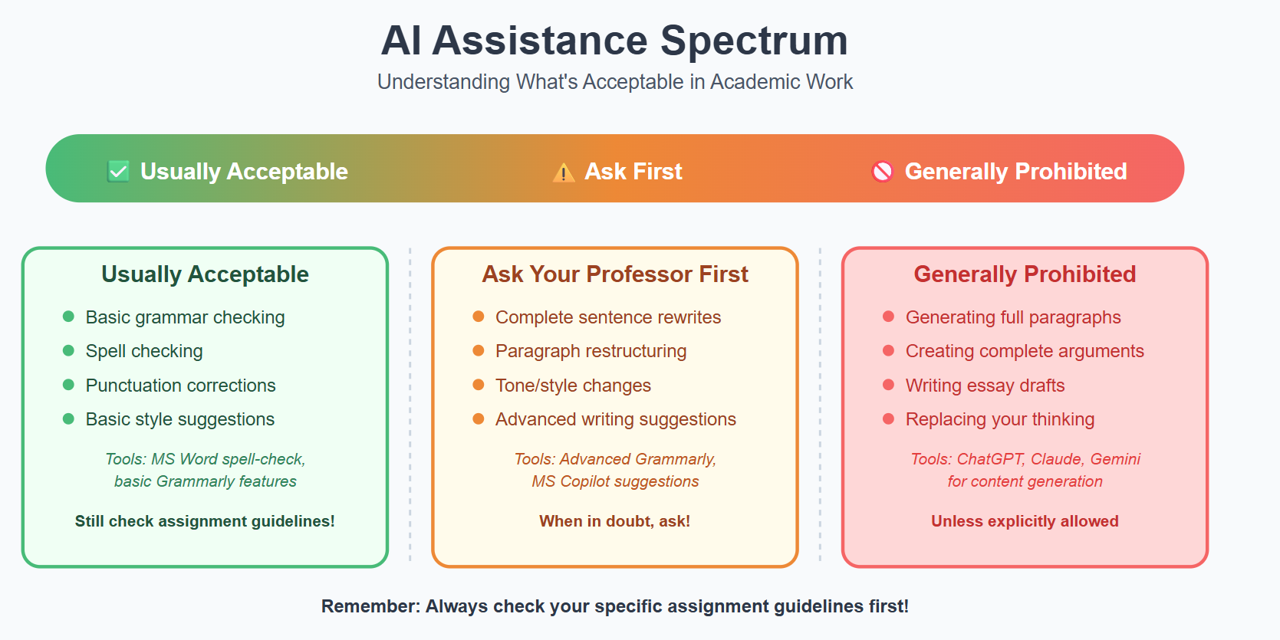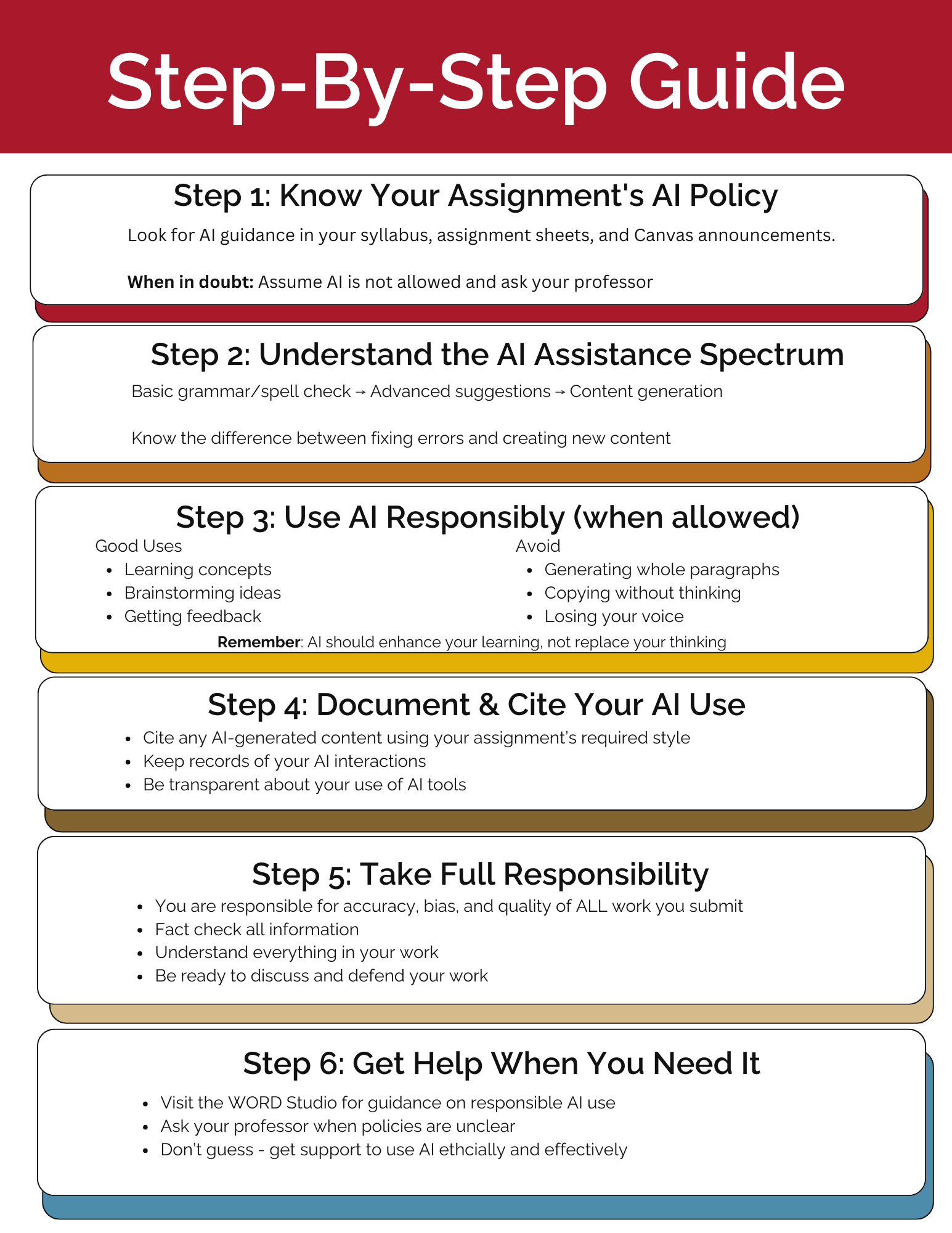Student Guide to Generative AI in Academic Work
As a student, you're navigating a rapidly changing landscape where generative AI tools like ChatGPT, Claude, Gemini, and others are becoming part of daily life. This guide will help you use these tools responsibly and successfully in your academic work while developing the critical thinking and communication skills that are uniquely yours.
What Counts as Generative AI?
Generative AI (GAI) refers to tools that create new content based on prompts. This includes:
- Text generators: ChatGPT, Claude, Gemini, Copilot Chat
- Image generators: DALL-E, Midjourney, Stable Diffusion
- Advanced writing features in familiar tools
The Gray Area: Writing Assistance vs. AI Generation
Many tools you're already familiar with are becoming more sophisticated:

When in doubt: Ask yourself, "Is this tool fixing my mistakes or writing new content for me?" If it's the latter, treat it as generative AI.

Download and print this graphic.
Building a Sustainable Relationship with AI
Remember Your Goals
You're in college to:
- Develop critical thinking skills that will serve you throughout your life
- Learn to communicate effectively in your own voice
- Gain deep understanding of your field and the world
- Prepare for a career where you'll need to think, create, and lead
AI as a Tool, Not a Crutch
The goal is to use AI in ways that:
- Enhance your learning rather than replace it
- Support your development as a thinker and communicator
- Prepare you for professional contexts where ethical AI use is valued
- Maintain your integrity and authentic voice
Questions for Self-Reflection
- Am I using AI to avoid challenges that would help me grow?
- Can I explain and defend all the ideas in my work?
- Does my final product still reflect my thinking and voice?
- Am I following my professor's guidelines and my institution's policies?
- Will this use of AI help me become a better learner and thinker?
